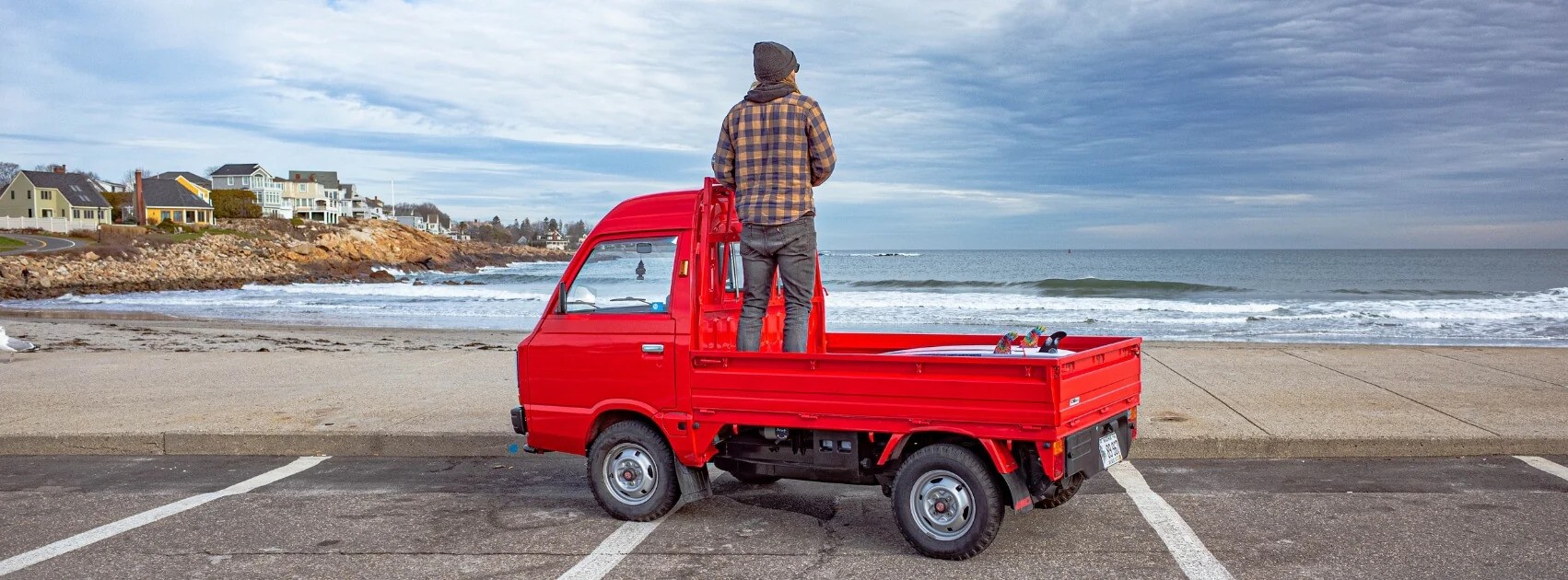The Subaru Sambar Kei Truck has maintained an almost legendary status among Japanese domestic market (JDM) enthusiasts. Despite being one of the smallest vehicles on the road, its practicality, engineering ingenuity, and unmistakable charm have made it a timeless favorite both in Japan and abroad. From collectors who appreciate its vintage aesthetic to everyday drivers who rely on its efficiency, the Sambar continues to stand out in a sea of Kei trucks. Understanding why this compact truck remains such a beloved icon requires a closer look at the qualities that define it.
1. A Perfect Example of Kei-Class Engineering Excellence
The Subaru Sambar Kei Truck was designed within Japan’s Kei vehicle regulations, which set strict limits on size and engine displacement. Rather than being a limitation, these rules inspired Subaru to think creatively about space, weight, and efficiency. The Sambar made its debut in 1961 and immediately impressed with its rear-engine, rear-wheel-drive layout—a configuration rarely seen in small utility trucks at the time.
This unique design offered several benefits. The rear engine allowed for a flat cargo bed, giving the truck excellent load capacity relative to its size. It also provided superior traction in slippery conditions, making it ideal for Japan’s mountainous terrain. Later models even introduced four-wheel drive, enhancing versatility without compromising fuel economy.
Unlike many of its contemporaries, the Sambar’s build quality reflected Subaru’s commitment to mechanical reliability. The engineering precision, combined with its ability to perform heavy-duty tasks, made it a standout among other Kei-class vehicles. The result was a truck that perfectly balanced compactness with capability—an engineering marvel that continues to impress decades later.
2. A Distinctive Design That Embodies Classic Japanese Utility
One of the main reasons the Subaru Sambar Kei Truck remains a JDM favorite is its distinctive appearance. While most small utility vehicles focus purely on functionality, the Sambar exudes a charming personality. Its small, rounded body lines and compact proportions give it a friendly, approachable look, while its simple, boxy shape makes it highly practical.
Collectors and enthusiasts often highlight how the Sambar captures the essence of 1960s and 1970s Japanese automotive design—minimalist yet purposeful. The early microvan variants and later truck models share this same aesthetic DNA, showcasing Subaru’s dedication to simplicity and efficiency. Every generation retained the Sambar’s unmistakable identity while incorporating small design improvements, making it instantly recognizable on the road.
The interior, though minimal by modern standards, is well thought out. The cabin provides excellent visibility, ergonomic controls, and surprisingly good comfort for its size. This attention to human-centered design has ensured that even older models remain enjoyable to drive. For enthusiasts, the Sambar’s design is not just functional—it’s nostalgic, reflecting a time when vehicles were built to last and every detail served a purpose.
3. Legendary Durability and Ease of Maintenance
Durability is one of the cornerstones of the Subaru Sambar’s enduring popularity. Owners often remark that these small trucks seem almost unbreakable, capable of handling decades of use with only minimal maintenance. This reliability stems from Subaru’s robust engineering philosophy and the simplicity of the Sambar’s mechanical components.
Early models used Subaru’s proven two-cylinder and later four-cylinder engines, which were designed for longevity and ease of service. The simplicity of the engine layout and drivetrain allows for quick repairs, making the Sambar particularly appealing to DIY mechanics and small businesses. Parts availability, especially through online retailers specializing in JDM imports, remains strong, making restoration projects both accessible and affordable.
The Sambar’s reputation for reliability also extends to its performance under stress. Farmers, delivery workers, and small shop owners in Japan have relied on these trucks for decades to handle everyday transportation and hauling tasks. Even after years of hard use, the Subaru Sambar Kei Truck often continues to perform reliably, with many examples still in operation today. This longevity is a major reason it remains a sought-after import for enthusiasts around the world.
4. Compact Efficiency with Surprising Versatility
The appeal of the Subaru Sambar Kei Truck lies not only in its small size but in how effectively it uses that space. Despite being just over three meters long, the Sambar offers remarkable cargo capacity and flexibility. The flatbed versions can carry tools, equipment, and goods with ease, while the van configurations provide ample room for passengers or storage.
Its tight turning radius and lightweight build make it ideal for city driving, narrow streets, and tight parking spaces—characteristics that made it a favorite among urban workers and rural drivers alike. The Sambar also delivers impressive fuel efficiency, thanks to its small-displacement engine and lightweight frame. Many models achieve fuel economy figures that rival modern hybrids, proving how advanced Subaru’s design was even decades ago.
Modern enthusiasts appreciate the Sambar’s adaptability. Whether it’s being used as a delivery vehicle, a weekend camper, or a showcase piece at car meets, the truck’s versatility is unmatched. Customization is another big part of its charm—owners modify their Sambars with new paint jobs, lowered suspensions, upgraded wheels, and even off-road setups. This creative potential has allowed the Sambar to evolve with each new generation of fans.
5. A Symbol of JDM Heritage and Cult Status Worldwide
Perhaps the most powerful reason the Subaru Sambar Kei Truck continues to be a JDM favorite is its cultural significance. In Japan, it represents an era when practicality, efficiency, and craftsmanship defined automotive design. For many enthusiasts, owning a Sambar is about connecting with that heritage—a reminder of a time when cars were smaller, simpler, and built with character.
As JDM culture has spread globally, the Sambar’s popularity has grown beyond Japan. Collectors and importers in the United States, Canada, and Europe have embraced the Sambar for its nostalgic appeal and unique personality. Its rarity outside Japan only adds to its desirability. Many owners proudly display their Sambars at car shows, appreciating how this small truck symbolizes the golden age of Japanese automotive innovation.
Social media has also played a role in reviving interest in the Sambar. Images and videos showcasing its compact charm and practicality have gained millions of views, introducing a new generation to this timeless vehicle. For many enthusiasts, the Sambar represents more than just a Kei truck—it’s a lifestyle statement, combining vintage design, efficient engineering, and JDM authenticity.
A Continuing Legacy of Practicality and Passion
The Subaru Sambar Kei Truck’s enduring popularity is no coincidence. It represents a rare blend of thoughtful engineering, timeless design, and long-lasting dependability. While newer Kei trucks offer more modern technology, few can match the Sambar’s combination of charm, utility, and history. Each generation of this vehicle has added something new while staying true to its core identity—an honest, capable, and lovable compact truck that continues to serve with pride.
As import laws become more lenient and interest in classic Japanese vehicles grows, the Sambar’s presence on roads outside Japan will likely continue to increase. Whether it’s hauling gear, drawing attention at car shows, or simply cruising through city streets, the Subaru Sambar Kei Truck remains an enduring symbol of Japan’s mastery of small-vehicle design. Its continued appeal is proof that great engineering and timeless design never go out of style.
In an era dominated by oversized vehicles and advanced electronics, the Sambar reminds us of a simpler philosophy: practicality can be beautiful, and efficiency can be fun. That’s why, decades after its debut, the Subaru Sambar continues to hold a special place in the hearts of JDM enthusiasts around the world.

